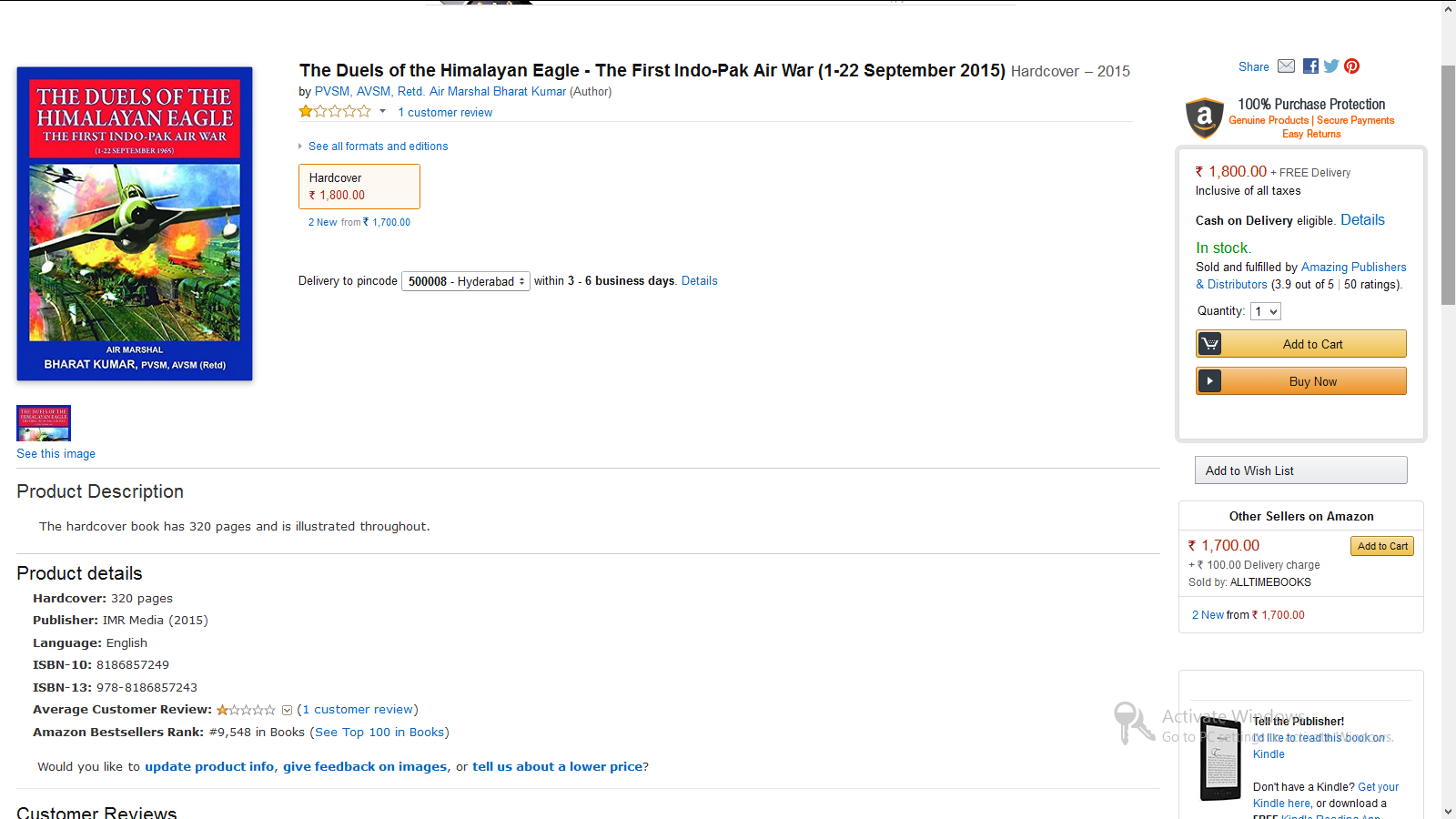It was the first air battle between India and Pakistan. The Indian Air Force was numerically superior, with 28 combat squadrons to PAF’s 11, but it was saddled with technologically inferior fighters. And, caught off-guard by the PAF offensive, India had lost 35 of its aircraft on the ground during pre-emptive strikes — one on Pathankot on September 6 and then on Kalaikunda, a day later.
Hello Warriors! Based on a report in TOI, IAF’s latest history of its operations in the 1965 war acknowledges it “suffered disproportionately higher losses” than PAF. But it says the force showed “resilience and determination” to set aside initial losses and gradually turn the tables on its adversary with effective counter-strikes to “prosecute” the war till the ceasefire came into effect on September 22.
The IAF-commissioned book, The Duels of the Himalayan Eagle: The First Indo-Pak Air War, was released on September 1 by Vice President Mohd. Hamid Ansari in New Delhi, as part of the war’s golden jubilee celebrations that started on August 28 and will last till September 22. The Army, too, is coming out with its new account of the 1965 war.
The book is written by Air Marshal (retd) Bharat Kumar, who was a young fighter pilot during the war. He got access to official records, squadron diaries and talked to several veterans for the 320-page book that debunks all accounts that portray PAF as a clear winner because the IAF suffered greater losses.
In all, IAF lost 59 out of its inventory of 460 aircraft, while PAF lost 43 of its 186 aircraft during the war. IAF grappled with first-generation subsonic fighters like Vampire and Dassault Toofani as well as second-generation transonic ones like Mystere, Hawker Hunter and Gnats, apart from the bomber-interdictor Canberra. It had just a handful of third-generation supersonic MiG-21s, which were then being acquired from Russia and would remain its mainstay for decades to come.
But Pakistan, which had cosied up to the US by the mid-1950s, was equipped with F-86 Sabre jets, F-104 Starfighters and B-57 Martin Canberras, along with much-better better weapons and radars. Moreover, 13 of IAF’s 28 squadrons had been deployed in the eastern and central sectors to tackle the Chinese threat.
The book also takes a candid look at the abysmal lack of coordination between IAF and the Army, a controversy that lingers to this day, with the author admitting that “mistakes were made”, as they are made in all wars.
There was, for instance, a huge delay in providing air support on September 1 when Pakistan launched Operation Grand Slam to capture Akhnoor to cut off the Kashmir Valley from the rest of India. The Army began demanding air support at 11 am but IAF fighters reached the battle area only at 5.30 pm after “political clearance” was granted.
Absence of joint IAF-Army planning and tardy intelligence as well as poor communication links and radar coverage, scarce resources and the wide theatre of operations, all led to the disjointed conduct of operations by India, which was still recovering from the 1962 debacle with China. But the lessons were learnt, as was witnessed during Pakistan’s crushing defeat in the 1971 war.
The 320 pages book, written by Air Marshal Bharat Kumar is available on amazon with a price of 1,800 rupees as of now!














